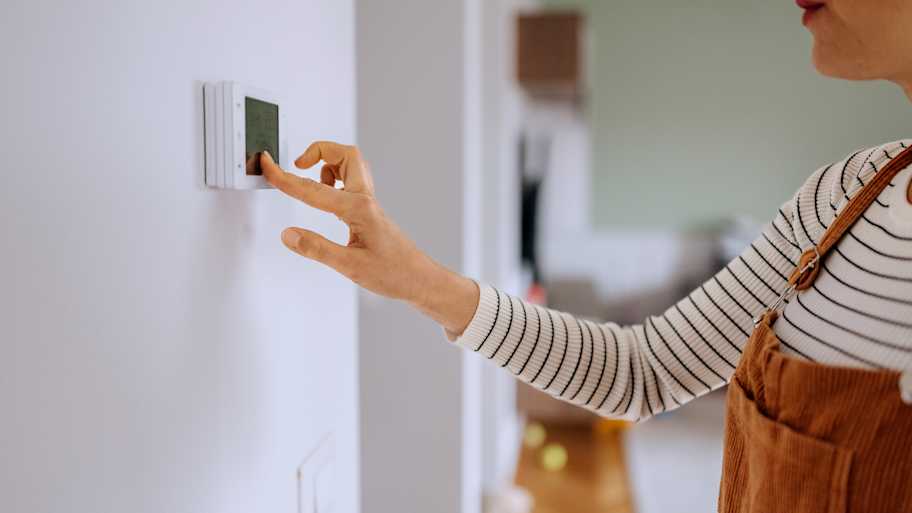
Here's what you can expect when getting an estimate for coolant leak repair costs. The cost can vary based on the detection method used, the source of the leak, and the amount of damage that needs to be repaired in the aftermath.
It may be a “mini” split, but it’s a major household helper


Ductless mini-split heat pumps don’t require ductwork.
These split systems can reduce energy consumption and costs.
Ductless heat pumps can both heat and cool your home.
Mini-split heat pumps are best for homes in mild climates.
Ductless mini-split systems can efficiently heat and cool your whole home or a single room for less money and far less hassle. While they may not be the right choice for everyone, they have their advantages, particularly if you’re considering air-conditioning your garage but don’t want to tear open the ceilings and drywall to do it. Read on to learn how a mini-split system works and whether this option is right for your home.
A ductless mini-split system is a type of heat pump that doesn’t require ducts. It is extremely popular, practical, and cost-effective in smaller homes and spaces, especially where air conditioning wasn’t originally installed.
However, homeowners with larger homes don’t need to cool off on this idea entirely. Mini-split systems can be used in homes with existing ducts. Homeowners may combine their ducted system with a ductless mini-split to enhance energy efficiency and zone control. This feature allows them to selectively heat or cool specific spaces instead of the entire house.

A mini-split consists of two units: an indoor air-handling unit and an outdoor compressor/condenser. The indoor air handling unit is suspended from the ceiling or located at the top of a wall, and it pumps heated or cooled air into the room. It is connected to the outdoor compressor through a power cable, a refrigerant line, suction tubing, and a condensate drain line.
The outdoor compressor moves refrigerant through the tubing to the indoor unit's coil. As air passes over the coil, it removes the heat and moisture, turning the liquid refrigerant into gas. The cooler, drier air then recirculates inside. The refrigerant, now in gas form, absorbs the heat from the indoor air and flows back to the outdoor unit. There, it releases the heat and returns to its liquid state.
While there are countless benefits of a mini-split system, they are not ideal for every situation. Let’s take a look at their advantages and disadvantages.

Mini-split heat pumps are highly efficient, reaching a maximum of 28.5 SEER2 for cooling and 18 HSPF2 for heating. They avoid the energy losses that can occur with ductwork since conditioned air is delivered directly into an area. This efficiency can translate into savings, as it reduces your energy bills over the long-term.
Mini-splits keep noise at minimum as they avoid the "whoosh" of air moving through ducts, and can feature quiet, variable-speed fans. They provide comfort without the need for expanding or upgrading your current system.
On the downside, mini-splits may not perform well in extreme cold or hot climates. Their temperature control and airflow can be less consistent than traditional systems.
Additionally, since they don’t need ductwork to operate, the units are fully exposed inside the home, which some homeowners may find unsightly. These systems do not remove humidity from the air, so in areas with high humidity, a separate dehumidifier may be necessary.
While the process for installing a mini-split system is fairly straightforward, there's still significant room for error. A DIY installation requires at least intermediate knowledge of refrigerant lines, parts, electrical systems and sizing of indoor air-handling units and outdoor compressors.
Without this knowledge, you risk the system not working properly (for example, your heat pump isn’t blowing hot air), breakdowns, damage to the unit and your home, and personal injury. It’s best to hire a local mini-split heat pump professional to do the job. Professional heat pump installation costs more due to the labor involved, but you’ll be safe in the knowledge that the job was done correctly.
From average costs to expert advice, get all the answers you need to get your job done.

Here's what you can expect when getting an estimate for coolant leak repair costs. The cost can vary based on the detection method used, the source of the leak, and the amount of damage that needs to be repaired in the aftermath.

Find out the average baseboard heater installation cost, key price factors, and ways to save. Get transparent, expert-backed estimates to plan your project.

Furnace cleaning is an essential annual chore to keep your home safe. Find out common furnace cleaning costs by type and size of furnace with this guide.

Not sure what the difference is between single-stage vs. two-stage HVAC systems? Find out which one is best for your home and needs.

If you use a heat pump for warming your home, you’ll want to understand when to use the different modes for emergency heat vs. heat.

What is a Manual J load calculation? It’s used to find out how many heating units your house needs. Discover how to use this complicated formula.